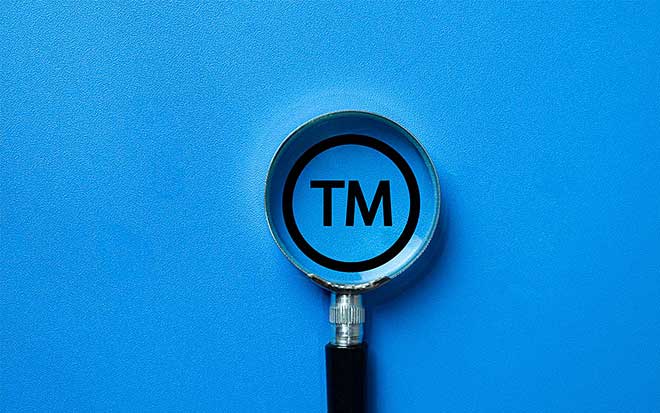Oct. 29, 2025
Different Roads to “Reasonable”: How States Are Redefining Warranty-Labor Time
State legislatures across the country are reexamining how motor vehicle original equipment manufacturers (OEMs) reimburse dealers for warranty work. While approaches vary, the direction is clear: lawmakers are experimenting with new ways to define “reasonable” labor time, from multipliers to third-party retail labor-time guides to dealer-calculated averages. The result is a patchwork of state-specific formulas and calculation frameworks that expand reimbursement obligations and create growing compliance challenges for OEMs.
For OEMs, these shifting methodologies represent more than just higher costs. They signal the emergence of a fragmented, state-by-state framework that will require close attention to program design, documentation, and dealer communications. Although many of these statutes also address parts pricing, diagnostic time, or payment procedures, labor-time calculation is the area where the most experimentation is now occurring.
Recent legislation in states such as New Jersey, Virginia, Wyoming, New York, Alaska, Illinois, Minnesota, and Montana shows that states are taking very different routes to answer the same question: How should “reasonable” warranty labor time be determined?
Selected State Approaches to Calculating Warranty-Labor Time
-
New Jersey (2025, effective 2026; Dealer-Average Multiplier Method)
New Jersey recently adopted a novel, data-driven formula for calculating warranty labor time that will become effective on April 1, 2026. Under the Motor Vehicle Open Recall Notice and Fair Compensation Act, N.J. Stat. Ann. § 56:10-15, as amended, dealers may elect reimbursement based on an “average retail labor-time allowance,” which is determined by dividing the number of labor hours billed in 100 sequential or 90 days of customer-paid service orders by the total labor hours provided under the OEM’s time guide for the same repairs. This allowance is then applied as a multiplier to the manufacturer’s guide for warranty labor compensation. This approach creates an individualized multiplier, specific to each individual dealer. Few OEM warranty systems are structured to reimburse dealers in this manner, and significant modifications may be necessary before the effective date.
- Virginia (2025; Parity Floor / OEM-Discretion Standard)
Virginia’s 2025 amendments to Va. Code §46.2-1571, which took effect July 1, 2025, stop short of prescribing a detailed calculation method for warranty reimbursement, but they do establish a broad parity standard prohibiting OEMs from compensating dealers at less than their retail rates for comparable warranty or recall work. Unlike more prescriptive laws in states such as New Jersey, Illinois, or New York, the amended Virginia statute does not dictate how labor time must be measured or verified, giving OEMs comparatively greater discretion in setting and documenting labor-time allowances. The law also weakens the ability to audit dealers and limits chargebacks, reinforcing the growing trend toward increased state oversight of warranty-payment practices.
- Wyoming (2025; Sample-Based Benchmark Method)
Wyoming’s new law, Wyo. Stat. § 40-20-119, as amended, took effect on July 1, 2025 and allows dealers to establish an hourly labor rate by mutual agreement with the OEM or by using the dealer’s effective retail labor rate, which can be established through 100 sequential or 90 days of non-warranty repair orders. The statute expressly defines how that rate is calculated—by dividing the total labor charge for the sample repairs by the total number of labor hours worked. This model is similar to what is used in other states and still permits OEMs to reimburse dealers based on accurate, internal OEM time guides.
- New York (2024)
Dealer-Guide Reference Method
New York adopted changes to its dealer statute, N.Y. Veh. & Traf. Law § 465, as amended, in the latter half of 2024 to allow dealers to claim reimbursement using any retail labor-time guide “reasonably utilized” by a franchised dealer for non-warranty customer-paid repairs. This dealer-guide model effectively shifts the benchmark for calculating labor time from manufacturer-set standards based on time studies to dealer-used third-party guides that are typically used for out-of-warranty vehicles that may require additional time for repairs.
- Alaska (2024)
Third-Party Reference Model
Alaska likewise amended its dealer statute, Alaska Stat., § 45.25.210, as amended, in the latter half of 2024 to require that warranty labor allowances not be less than those contained in “independent labor-time guides.” This third-party reference model establishes a statutory floor tied to recognized independent third-party repair guides, requiring that warranty compensation be based on guides that are more commonly applied to older, out-of-warranty vehicles in the retail service context.
- Illinois (2021, upheld 2024 ;OEM-Rate Multiplier Method)
Illinois amended its Motor Vehicle Franchise Act, 815 Ill Comp. Stat. 710/6, as amended, in 2021 to require manufacturers to pay dealers based on an “agreed-upon” time guide, or, where the parties cannot agree upon a specific time guide for reimbursement, to apply the manufacturer’s time guide multiplied by 1.5. This allows the dealer to use the multiplier by refusing to agree to use any specific guide the OEM may agree to use.
By codifying a 1.5-times multiplier, Illinois offers a concrete example of how states are translating the concept of “reasonable” labor time into a defined mathematical formula. Notably, the statute also prohibits OEMs from imposing any cost recovery fees against dealers. In May 2024, the U.S. District Court for the Northern District of Illinois dismissed Volkswagen’s constitutional challenge to the law, leaving the amendment intact, although the Court noted that vehicle cost increases applied uniformly statewide would be permissible despite the cost recovery prohibition.
- Minnesota (2023; Dealer-Guide Method)
In 2023, Minnesota amended its warranty-reimbursement statute, Minn. Stat. § 80E.041, as amended, requiring OEMs to compensate dealers for warranty work at the same effective labor rate charged to retail customers. The law further specifies that time allowances must be based on the labor-time guide the dealer actually applies for customer-paid work.. This dealer-guide method shifts the calculation mechanism away from the OEM-defined time guides that have historically been used for warranty reimbursement and towards the time standards historically used by independent repair shops and for older, out-of-warranty vehicles in the retail service environment.
- Montana (2021; Dealer-Choice Model)
Montana amended its franchise law, Mont. Code Ann. § 61-4-213, as amended, in 2021 to give dealers the option of selecting either the manufacturer’s labor-time guide or the dealer’s own retail labor guide (or its equivalent) when seeking reimbursement for warranty repairs. This dealer-choice model introduces flexibility not seen in most other jurisdictions, allowing dealers to choose the time guide that will provide the most reimbursement.
Ongoing Developments
The state laws summarized here represent different approaches to how warranty-labor time is calculated, but the list is not exhaustive. Other jurisdictions have adopted or are considering alternative formulas, and additional legislation is expected as lawmakers continue exploring new calculation methods. As the landscape continues to evolve, OEMs should monitor both enacted and pending bills to identify new methods that could affect warranty-labor reimbursement practices.
For OEMs, the proliferation of differing labor-time methodologies could present not only increased costs, but also significant operational and compliance challenges. Each state’s approach introduces new variables into warranty-program design. Divergent definitions of “reasonable” labor time increase the potential for disputes, while rising reimbursement obligations may influence pricing, forecasting, and the reserves manufacturers allocate for warranty expenses. As states take different roads defining “reasonable” labor time, OEMs will want to stay alert so they are best positioned to manage costs, maintain dealer relationships, and navigate an increasingly complex regulatory landscape.









